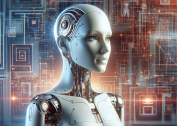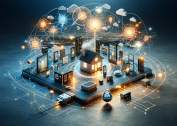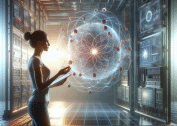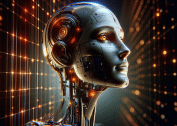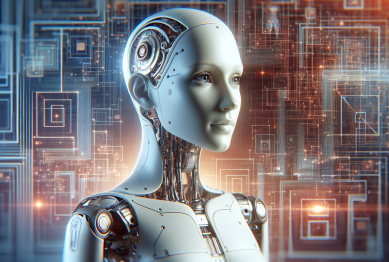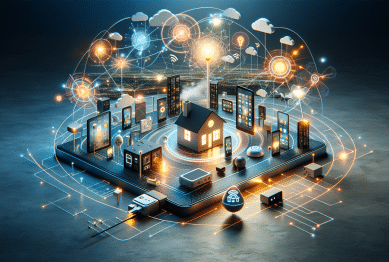Artificial intelligence is everywhere—reshaping daily routines, innovating jobs, and even changing how people approach problem-solving. This article explores the key AI tools making headlines, revealing why they matter and how they could influence the way people live and work. Dive in to understand the momentum behind the latest AI technology shifts.
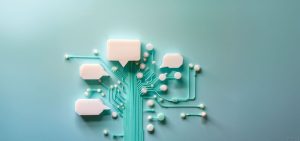
The Acceleration of Artificial Intelligence
Artificial intelligence has seen exponential growth over the past decade. AI tools are being integrated into everything from home smart speakers to major scientific research labs. Companies invest billions to find ways this technology can automate tasks, analyze huge data sets, and streamline operations. This momentum is not slowing—new models and platforms are released each year, extending AI’s reach into everyday life. What was once the stuff of science fiction is now unfolding in homes, workplaces, and classrooms. Natural language processing, image recognition, and machine learning are buzzwords because they’re being used to solve complex challenges in real time.
One striking example is the emergence of natural language processing systems that can draft messages, answer questions, or summarize documents almost instantly. For many knowledge workers, AI-powered tools are becoming as essential as email. Schools and universities now teach students the basics of algorithmic thinking, recognizing that future careers will almost certainly interact with smart systems. Tech giants offer free workshops and short courses designed to bridge the skills gap, ensuring a larger population can participate in and benefit from AI’s growth. Governments and non-profits invest in reskilling initiatives to prepare for workforce changes brought about by AI automation (Source: https://www.brookings.edu/articles/ai-and-the-future-of-work/).
AI is not just about automation. Some tools help scientists predict climate trends, discover new medicines, or optimize energy use in cities. Early warning systems powered by algorithms can identify extreme weather or cybersecurity breaches before they spiral out of control. For hospital administrators, artificial intelligence supports error detection and workflow management. This sweeping adoption hints at an important truth: AI is not a temporary trend. Instead, it’s becoming a trusted—if invisible—partner for many of the world’s most critical tasks. Understanding this context is foundational for anyone who wants to grasp the future direction of technology.
AI in Everyday Technology
Daily life is now interwoven with AI-powered technology, sometimes in surprising ways. Smart home devices, such as thermostats and speakers, learn individual preferences to improve energy efficiency or suggest music. On smartphones, digital assistants interpret voice commands and recommend routes, restaurants, or even spending habits based on daily behavior. These AI tools rely on data analysis, natural language understanding, and adaptive learning to make services personal and convenient. Even predictive text in messaging apps is powered by machine learning, giving people near-instantaneous recommendations to streamline typing.
The ease of integrating artificial intelligence into routines encourages experimentation across ages and professions. For example, individuals with visual impairments might rely on camera-based object recognition tools to navigate public spaces safely. Meanwhile, parents may install AI-enabled baby monitors that detect abnormal movement or crying, enhancing peace of mind. The variety of accessible apps and gadgets has democratized technology, putting the benefits of artificial intelligence in the hands of millions without requiring expert knowledge. This widespread adoption is paving the way for deeper involvement in everyday problem-solving and decision-making using smart algorithms (Source: https://www.nist.gov/artificial-intelligence).
As AI continues to evolve, integration with wearable tech and connected cars is set to increase. Imagine a vehicle capable of predicting breakdowns or traffic jams, rerouting itself for safety and efficiency. Smartwatches may soon monitor stress levels and proactively recommend relaxation techniques based on heart rate and sleep data. The blending of AI with the Internet of Things (IoT) forms an ecosystem where devices continuously learn to anticipate needs. These emerging uses offer a glimpse into a future where technology provides seamless support—enhancing comfort, safety, and even creativity.
Revolutionizing the World of Work
AI is transforming entire industries, making work environments more efficient and sometimes more creative. In finance, tools that analyze market trends in real time help professionals make informed decisions quickly. Healthcare is experiencing similar shifts, as AI-driven diagnostics assist doctors in detecting conditions with greater accuracy. Creative sectors, too, are embracing smart tools—graphic designers use AI to generate images, writers brainstorm with machine learning models, and architects optimize designs using simulation platforms. These innovations not only boost productivity but also spark new workflows previously unimagined.
One key area benefitting from artificial intelligence is operational efficiency. Supply chains, logistics, and customer service have all been reimagined by leveraging data mining, predictive analytics, and chatbot-powered communication. Employees are finding they can delegate repetitive tasks to intelligent process automation, freeing up valuable time for strategy and creative pursuits. Large organizations may run entire HR departments with the assistance of AI tools that screen resumes and schedule interviews, leading to faster and more equitable hiring cycles. The combination of speed and accuracy underscores why so many industries are eager to explore further adoption (Source: https://www.weforum.org/agenda/2023/01/ai-impact-future-work/).
No workplace transformation comes without concerns. The rise of automated tools fuels debate about job displacement and the evolving nature of human roles. While some fear the loss of routine positions, others point to new job categories emerging—AI trainers, data ethicists, and algorithm auditors. Upskilling and lifelong learning are widely promoted as essential strategies to remain relevant. As AI tools become smarter, the line between routine automation and authentic human creativity continues to blur, suggesting that people with adaptable, digital skill sets are best positioned for opportunity.
Healthcare Innovation Powered by AI
Healthcare is one area where artificial intelligence is already saving lives. Image recognition software helps read X-rays and MRI scans, sometimes catching anomalies doctors might overlook. AI chatbots answer patient questions and schedule follow-ups, reducing administrative burdens. Medical researchers tap into AI’s processing power to analyze thousands of clinical trial results, identifying promising therapies in record time. This acceleration of discovery is bringing innovations to market faster—and making personalized medicine more attainable for millions of people worldwide.
Wearable medical devices powered by AI track heart rhythms, blood oxygen, and even detect early warning signs of conditions like diabetes or atrial fibrillation. Data collected from these devices can be transmitted directly to care teams, allowing proactive intervention. The collaboration between smart technology and healthcare providers allows for timely and tailored treatment plans. Patients might never visit a traditional clinic but can receive critical insights into their health remotely, minimizing barriers and improving overall care experiences (Source: https://www.healthit.gov/topic/scientific-initiatives/precision-medicine/artificial-intelligence-healthcare).
With innovation comes responsibility. Ethics and data privacy are now at the core of healthcare AI discussions. Medical data is deeply sensitive; developers must ensure systems are secure and transparent about usage. Regulatory agencies around the world are crafting guidelines to safeguard personal health information while enabling research and care improvements. The balancing act between innovation and privacy will shape the longevity of AI’s role in medicine. Stakeholders hope to maximize benefits while building public trust in smart healthcare technologies.
The AI Data and Ethics Debate
Behind every powerful AI tool is data—often personal, sometimes sensitive. As machine learning depends on large, diverse data sets, concerns about privacy, bias, and transparency are intensifying. Algorithmic decisions can sometimes be opaque, sparking calls for explainable AI. Fairness in automated systems—whether in loan approvals or criminal justice—is under growing scrutiny by researchers and watchdog organizations. Developers, for their part, work toward creating algorithms that minimize discrimination and ensure accountability.
The European Union and other governments have begun implementing regulations aimed at ensuring AI systems are trustworthy and respect individual rights. These include requirements for human oversight, safety, and ongoing monitoring of automated systems. Nonprofits and academic groups publish guidelines to help companies align AI development with ethical principles, fostering an industry-wide push for transparency. Many experts argue that a diverse workforce is also crucial, as different perspectives help identify unintended biases early in product design (Source: https://ec.europa.eu/info/research-and-innovation/strategy/strategy-2020-2024/our-digital-future/artificial-intelligence_en).
Education is a key part of preparing society to live alongside AI. Schools, businesses, and community groups offer training that addresses data management, critical thinking, and digital citizenship. The more people understand how algorithms impact decisions, the more empowered they feel in a digital-first world. As public debates continue, finding consensus on responsible AI will remain an evolving challenge—one that is necessary if trust in the technology is to match its capabilities.
Preparing for the AI-Powered Future
Looking ahead, it’s clear that artificial intelligence will play a growing role in shaping daily life, industry, and even policy. Startups are racing to develop the next big AI breakthrough, while established companies invest in refining tools that drive efficiency and innovation. Individuals recognize the need to adapt, seeking online training, AI literacy workshops, and collaborative projects to understand the technology’s implications. This proactive mindset positions users to maximize what AI can offer while safeguarding their own interests.
Governments fund major research projects and encourage public-private partnerships to spur responsible innovation. AI competitions push teams to solve global challenges—from clean energy production to fighting misinformation—with creative algorithmic solutions. Some countries have appointed national AI ethics councils tasked with steering development in the public interest. These evolving frameworks create shared responsibility for directing technology in ways that reflect broad social values and goals (Source: https://www.usa.gov/artificial-intelligence).
For individuals, lifelong learning remains central. New resources—short courses, podcasts, hands-on training—are available to help anyone boost technical literacy. Understanding the promise and limitations of AI tools ensures people can make informed decisions at work and home. The conversation about artificial intelligence is only just beginning. By embracing curiosity and continuous education, people are better equipped to thrive in a world where algorithms are not just helpers but active partners in innovation and societal progress.
References
1. Brookings Institution. (2022). AI and the Future of Work. Retrieved from https://www.brookings.edu/articles/ai-and-the-future-of-work/
2. National Institute of Standards and Technology. (2023). Artificial Intelligence. Retrieved from https://www.nist.gov/artificial-intelligence
3. World Economic Forum. (2023). How AI is impacting the future of work. Retrieved from https://www.weforum.org/agenda/2023/01/ai-impact-future-work/
4. U.S. Department of Health & Human Services. (2023). Artificial Intelligence in Healthcare. Retrieved from https://www.healthit.gov/topic/scientific-initiatives/precision-medicine/artificial-intelligence-healthcare
5. European Commission. (2023). Artificial Intelligence. Retrieved from https://ec.europa.eu/info/research-and-innovation/strategy/strategy-2020-2024/our-digital-future/artificial-intelligence_en
6. USA.gov. (2024). Artificial Intelligence Explained. Retrieved from https://www.usa.gov/artificial-intelligence

